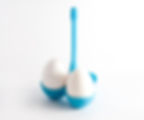- Dec 8, 2020
- 2 min read

Benign Prostate Hyperplasia, or also known as BPH is a non-cancerous increase in size of the prostate gland. As the prostate gland enlarges, obstructive and irritative symptoms may be experienced such as frequent urination, trouble starting to urinate, weak stream, inability to urinate, or loss of bladder control. BPH is believed to be related to aging and affects almost 50% of men above 50 and 90% of men above 80. As of now, there has not been a cure for BPH, however, there are many options to control prostate growth and prevent the symptoms.
Management of the condition depends on its severity. At a primary stage, lifestyle modifications such as reducing caffeine/alcohol intake and increasing physical activities that can help strengthen the pelvic floor muscles may help. For mild to moderate forms of BPH, your doctor may suggest supplements or medication to help with the symptoms. Some work by relaxing the prostate and/or bladder muscles whereas the rest may help shrink the prostate. The most commonly used supplements to treat BPH are saw palmetto, lycopene and stinging nettle.

Saw palmetto has been shown have an efficacy comparable to finasteride with a better side effect profile. Saw palmetto is a palm plant that people have used for decades as an aid to fertility and men’s health. According to The New England Journal of Medicine, over 2 million men in the United States alone supplement with this herb to treat BPH and other prostate issues. Despite being a cost-effective alternative to finasteride, the long-term outcome of use of saw palmetto in patients with BPH has not yet been established.

Lycopene is a bright red carotenoid hydrocarbon found in tomatoes and other red fruits and vegetables
Lycopene, being one of the lesser known supplements to help with BPH has shown to improve symptoms with a minimum of six months consumption. There are many researches that shows the direct connection between lycopene and how it helps quench the prostate tissue’s thirst for antioxidants. Apart from just BPH, lycopene has also shown to be beneficial in reducing prostate specific antigen (PSA) associated with prostate inflammation as well as prostate cancer. If you feel like you have the symptoms mentioned above, do consider meeting a healthcare professional to get it checked. Your doctor will evaluate you based on your age, health, symptoms and the size of your prostate. Usually, if your symptoms do not affect your quality of life, you may be advised to put off treatment for the time being. However, if it does interfere with your daily life, do ensure you meet a certified doctor and do the necessary diagnostic tests to help you overcome your symptoms. Stay safe!


